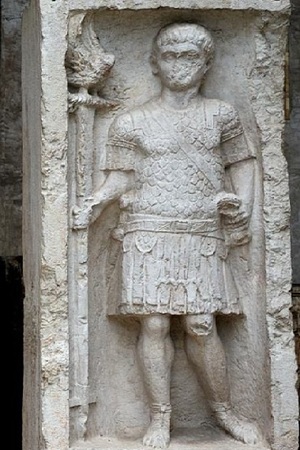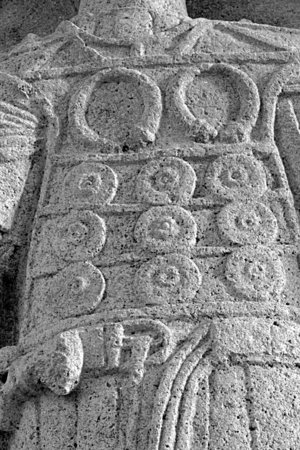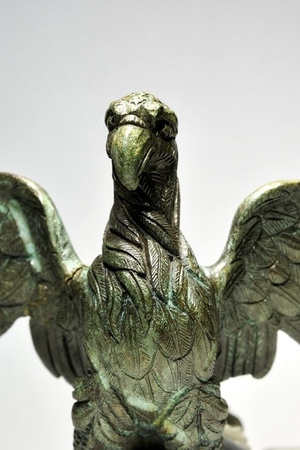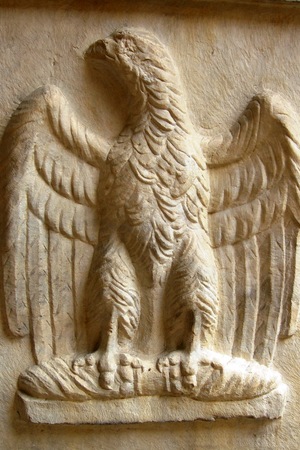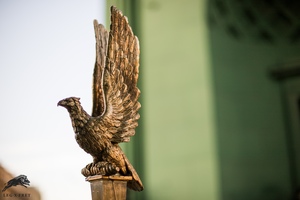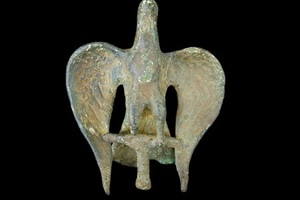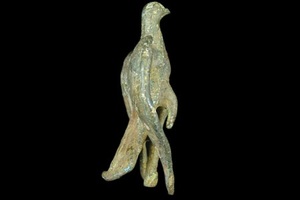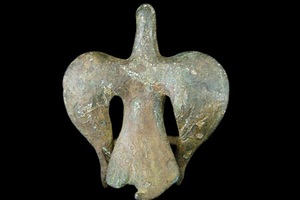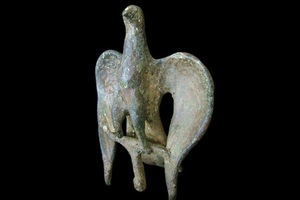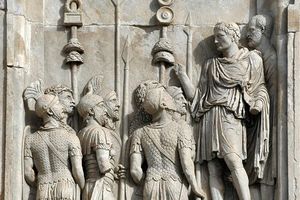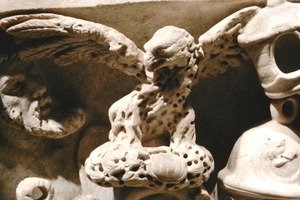Aquilifer
Aquilifer (Latin: aquilifer - "eagle bearer," from Latin: aquila - eagle) was a military rank in the army of Ancient Rome. It was the highest position in the standard-bearing group of a legion, and their duties included guarding the legionary eagle and carrying it into battle.
Prior to Gaius Marius' reforms in 104 BC, various animal images such as boars, wolves, bulls, horses, and others could be used as standards (symbols) of the legion. After the reforms, a unified standard, the aquila, was introduced. It was crafted in the form of a small golden eagle. Hence the name of the position, "aquilifer," literally meaning "eagle bearer." Like the aquila, there was only one aquilifer for the entire legion. They were considered one of the highest-ranking officers but ranked below the centurions. They received double pay. Outside of battle, the aquilifer performed the duties of a quartermaster and treasurer of the legion, overseeing the treasury and the distribution of savings to the legionaries.
The aquilifer with the legionary eagle was supposed to be in the first century of the first manipulus of the first cohort and was effectively accompanied by Primipilus.
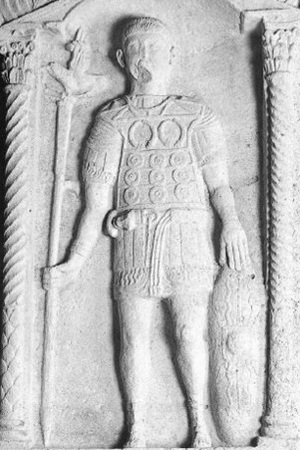 Gravestone of Gnaeus Musius, Aquilifer of the Fourteenth Legion. The tombstone is located in the Mainz Museum. EDCS-11000956. First half of the 1st century AD
Gravestone of Gnaeus Musius, Aquilifer of the Fourteenth Legion. The tombstone is located in the Mainz Museum. EDCS-11000956. First half of the 1st century ADAquila (Latin: aquila - eagle) was a type of standard in the shape of an eagle used in the ancient Roman army. It is believed that they could be made of gold, silver, and bronze. There was only one aquila per legion, and its loss was considered a great disgrace, often resulting in the disbandment of the legion.
Equipment
On most of the known depictions of aquilifers, they are shown with their heads uncovered, without helmets or animal skins. However, according to several surviving tombstones, aquilifers wore a lion or bear skin over their helmets, with the paws tied around their neck. Their weaponry consisted of a gladius, pugio, and parma. As protective equipment, aquilifers could use either lorica hamata or lorica squamata, with an officer's subarmalis worn underneath, adorned with pteruges on the shoulders and thighs. There is also a suggestion that aquilifers wore a face mask called a lichinus, which was attached to the helmet. The symbol of their military status, the cingulum, could be worn with or without suspensories. Exotic variations are also encountered, such as two belts or a belt with suspensories attached directly to the end of the cingulum. Aquilifers also wore phalerae, which were not as elaborately decorated as those worn by centurions. The phalerae lacked intricate chased scenes in their design and were primarily adorned with simple geometric patterns.
Related topics
Legion standard-bearing Group, Legion, Centurion, Legionnaire, Parma, Falers, Gladius, Pugio, Subarmalis, Lorica Squamata, Lorica Hamata
Literature
- Stoll, Oliver. Der Adler im «Käfig». Zu einer Aquilifer-Grabstele aus Apamea in Syrien und Tabellarischer Anhang zur Darstellung des Legionsadlers und anderer Signa in der römischen Plastik // Römisches Heer und Gesellschaft. Gesammelte Beiträge 1991—1999. — Stuttgart: Franz Steiner Verlag, 2001. — S. 13—46. — (Mavors Roman army researches, vol. 13). — ISBN 3-515-07817-7.
- Rubtsov S. Bannermen of the Lower Danubian legions. Military history magazine "PARA BELLVM"

 Gallery
Gallery






